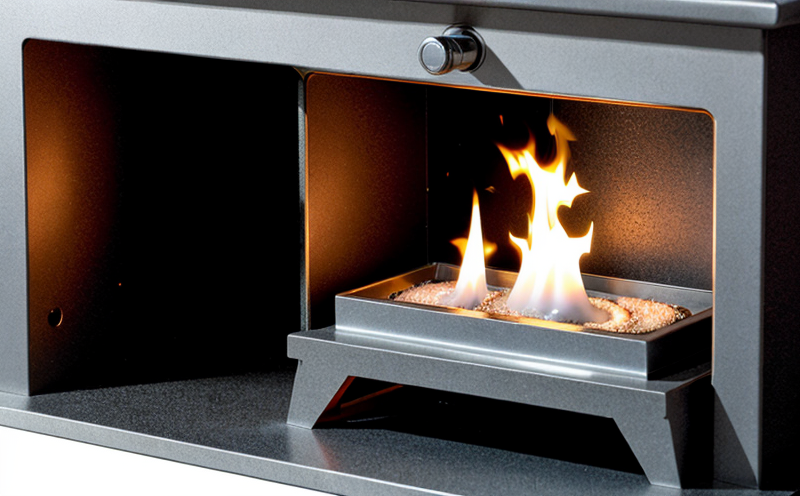Ignitability Testing of Paper and Cardboard Materials
The ignitability testing of paper and cardboard materials is a critical service that evaluates the inherent fire safety characteristics of these products. This testing ensures compliance with international standards, thereby safeguarding end-users from potential hazards associated with flammable materials. Ignitability tests are particularly important for sectors like packaging, building materials, and consumer goods where combustibility can pose significant risks.
Paper and cardboard used in many applications require rigorous evaluation to determine their resistance to ignition and flame spread under controlled conditions. The testing process involves subjecting samples of these materials to defined thermal environments that simulate real-world exposure scenarios. This helps manufacturers understand the material's behavior when exposed to heat, flame, or other fire-related stressors.
One of the key tests in this category is Surface Flame Spread Index (SFSI), which measures how quickly flames spread across the surface of a given material. This index provides valuable insights into the flammability and potential for rapid combustion. Another important metric is Ignition Temperature, which indicates the minimum temperature at which materials can spontaneously ignite.
Proper specimen preparation is essential to ensure accurate test results. Specimens should be cut according to specified dimensions, conditioned in a standard environment, and prepared without any defects or alterations that could affect the outcome of the tests. The testing apparatus used for these evaluations includes specialized equipment capable of simulating realistic fire conditions while providing precise measurements.
The process typically involves placing the prepared specimens into a furnace where they are exposed to controlled levels of heat and flame. Instruments monitor various parameters such as temperature, time-to-ignition, flame length, and smoke production throughout the test duration. Afterward, detailed reports are generated outlining key findings related to each material's ignitability properties.
Understanding these characteristics allows for informed decision-making regarding product design and selection of appropriate materials that meet safety requirements without compromising functionality or aesthetics.
| Test Parameter | Description |
|---|---|
| Surface Flame Spread Index (SFSI) | Metric indicating the rate at which flames spread across a material's surface. |
| Ignition Temperature | The minimum temperature required for spontaneous ignition of a given material. |
| Smoke Production | Quantitative measure of smoke emitted during combustion testing. |
| Flame Length and Duration | Visual and quantitative assessment of flame characteristics. |
Benefits
The primary benefit of ignitability testing lies in its ability to enhance product safety by identifying potential risks early in the design or manufacturing process. By understanding how different papers and cardboard materials behave under fire conditions, manufacturers can make informed decisions about material selection that balance performance with fire safety.
Additionally, this service contributes significantly towards meeting regulatory requirements set forth by various standards organizations such as ASTM D575-18 for paper ignitability and ISO 6947:2013 for cardboard ignitability. Compliance with these standards not only ensures legal adherence but also builds trust among consumers who value safe products.
From a business perspective, successful completion of ignitability tests can lead to improved brand reputation, increased market share, and reduced liability risks associated with product-related accidents or incidents involving fire hazards.
Moreover, the insights gained from these assessments enable continuous improvement in material formulations, leading to safer products over time. This proactive approach fosters innovation within the industry while promoting responsible practices that contribute positively towards public welfare.
Industry Applications
- Packaging: Ensuring safety of packaging materials used for shipping goods susceptible to fire hazards.
- Building Materials: Verifying the flammability properties of insulation and wallboard components.
- Consumer Goods: Evaluating ignitability risks in textiles, furniture, and other household items.
- Automotive Industry: Assessing fire resistance of interior materials used in vehicles.
In each application area, the results from ignitability testing play a crucial role in ensuring that products meet both internal quality control standards as well as external regulatory expectations. This comprehensive evaluation helps manufacturers maintain high levels of product safety across diverse markets worldwide.
International Acceptance and Recognition
- ASTM D575-18: Standard Test Method for Ignition and Burning Characteristics of Paper (Flame Spread and Smoke Production).
- ISO 6947:2013: Specification for Determination of Flame Spread Index and Other Fire Resistance Properties of Cardboard.
- EN ISO 15229-2:2018: Part 2 of European Standard specifying methods for testing the fire behavior of building materials and products exposed to a flame.
- IEC 60332: Series of tests on electrical insulation in respect of the effect of heating, cooling, and flame impingement.
The acceptance and recognition of these international standards reflect their importance within the global community. Compliance with these guidelines demonstrates a commitment to upholding high-quality fire safety practices which are essential for protecting people, property, and environments from the dangers posed by flammable materials.





